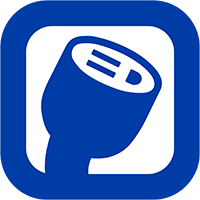In a couple weeks I'll be taking a roughly 3200 mile trip in my Model Y LR, driving from Santa Cruz, CA to Lovell, ME. I'm wondering if anyone has any tips or advice for me. More details:
The car will be packed pretty full including me and a dog, and we'll do it in 7 days of driving. Five days are quite long, at 9-11hrs. Two days are shorter, at about 4 hrs because I have two brief visits planned on the way, in Salt Lake City and in upstate NY. I've planned my route (more info below) to arrive mid-day at these places so I can visit with my son (UT) and friends (NY) for an afternoon and evening. We'll stay in hotels/motels when we aren't visiting friends or family. My schedule is flexible, so if range predictions prove to be inaccurate or other troubles arise I can adjust accordingly.
I've used A Better Route Planner to get a feeling for driving distances and charging times, and then I settled on various intermediate way points that seem fit my needs. I plugged the whole route into ABRP with way points, desired charging limits and so on, and this is what the plan looks like:
Santa Cruz CA to Elko NV, 11hrs
Elko to Salt Lake City UT, 4hrs
Salt Lake to Ogalalla NE, 11hrs
Ogalalla to Iowa City IE, 10+hrs
Iowa City to Cleveland OH, 11hrs
Cleveland to Canandaigua NY, 5hrs
Canandaigua to Lovell ME, 9hrs
I also played around with the route planner on tesla.com, and it shows very similar (slightly faster) travel times including charging. I haven't used navigation in the car because I haven't figured out how to do point A to point B routes. As far as I can tell it only seems to let you begin a route from where the car is actually located at the time (i.e. my house right now). Am I missing something? Can you ask the car to plan a route that begins someplace other than your current location? I also haven't found a way to plan multiple destination routes like ABRP can do.
I don't yet have a tire repair kit or a spare. I don't have room and don't want to buy or carry a spare tire. I have 200 mile towing on my AAA membership. I'm open to getting a repair kit and compressor, but my current thinking is I don't really need it because flats are unlikely and I can get towed to a tire repair place if I really need it. What do you think, am I being stupid?
Would it be worth subscribing to FSD ($199) for a month to get a few extra features for the drive? It's not entirely clear to me what features I would get because I definitely wouldn't get enrolled in the FSD beta program before this trip (time is short, and I'm on a later software release than the FSD beta). I believe I would get navigation while on highways, and maybe automatic lane changes with autosteer on the highway. There might be some minor in-town features activate, but I don't really care about anything except the long stretches on highways.
Honestly at this point I'm ready to pack the car, load up the first destination and go. What else should I be thinking about?
Thanks,
Dan



